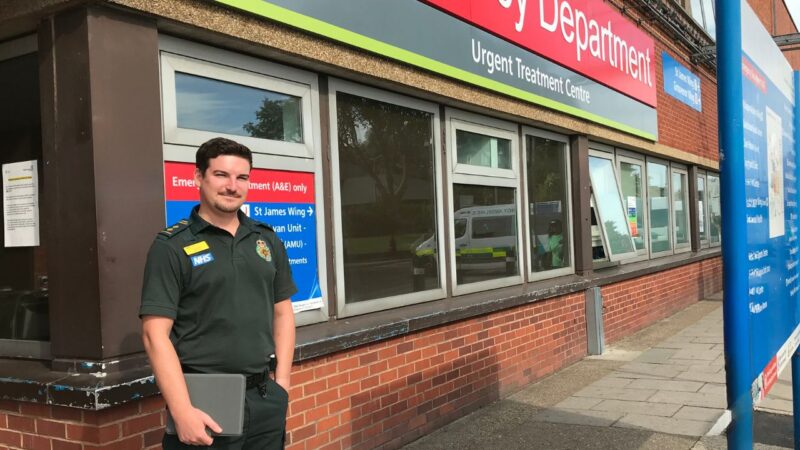Ambulance handover delays across the UK were rarely out of the news last winter, with reports of high demand leading to long waits to admit patients to A&E. In South West London, hospitals work closely with the London Ambulance Service NHS Trust to minimise delays and get crews back on the road.
Tom Noble is a hospital ambulance liaison officer or HALO – the link between the ambulance service and hospital trusts. A paramedic, Tom has worked for London Ambulance Service since 2015, mainly on the road seeing patients. He is currently based at Croydon University Hospital.
He describes his day and how he intervenes when things get busy. “When I arrive, I meet with the nurse in charge to get a view of how the emergency department is looking, their predicted capacity and if they’re anticipating any exceptional issues.
“We begin our shift at noon when it’s usually just starting to get busier, with more patients coming in. Ambulances might be waiting. Crews might be getting stressed because they’re having to wait with their patients and nurses are stressed because they can’t move patients into the department as quickly as they would like.”

Not everyone has heard of HALOs, but they play a critical role in managing situations like this. Before the pandemic HALOs were normally only deployed in emergencies. But as pressure on A&E departments has grown, hospitals across South West London use HALOs to improve the flow of patients, cutting handover times, boosting efficiency and ensuring people get the right care at the right time. The service, and the individual HALOs, are hugely valued by the hospital trusts.
The most rewarding part is when you’ve managed that situation. All the crews have gone back out, you don’t have any further delays and everyone’s pressure levels have reduced a little bit.”
Tom explains how it works in practice. “If there are any issues causing delays, we work with the nurse in charge and our management team to resolve them, whether it’s something the hospital can address with staffing or something the ambulance service can put in place.
“In the past, if ambulances arrived at a hospital and there was no space in A&E, crews would remain with their patient, which obviously caused a lot of delays. Now we can have one ambulance crew looking after a number of patients to release the other crews back onto the road and we can support this process as a HALO.
“The most rewarding part is when you’ve managed that situation. All the crews have gone back out, you don’t have any further delays and everyone’s pressure levels have reduced a little bit.”
What helps is that I know what’s going on. From the ambulance perspective, I know the amount of calls we’re getting, the amount of ambulances available, I know if resources are under pressure and I can liaise with our trust on that.”
Andrew Fitzgerald is a HALO based at St George’s Hospital. He originally trained a nurse and worked in A&E before joining the ambulance service. “Having worked in A&E, I can understand the pressures and the processes,” he said. “I felt I could bring something to the HALO role, bridge that gap.
“What helps is that I know what’s going on. From the ambulance perspective, I know the amount of calls we’re getting, the amount of ambulances available, I know if resources are under pressure and I can liaise with our trust on that. St George’s is a major trauma centre, with many specialities. If the hospital is having issues discharging patients from those specialties, I have an oversight of that too.”
This understanding of both sides means HALOs also contribute to improvements to services. As Tom explains: “We give our input into alternative ways of providing care, to make improvements and fill gaps – such as with urgent treatment centres and same day emergency care. We help identify where those pathways don’t work as well as they could, because we hear feedback from the ambulance crews.”
They might be quite affected by a call, quite tearful, so we let them know they can come and talk to us.”
Another part of the job is offering management support to paramedics who arrive at the hospital. Says Andrew, “When our crews bring a sick patient to the hospital, we take the pressure off. We have a lot of newly-qualified paramedics coming through the ranks. It’s quite nice to have a manager presence when they bring in a challenging patient, or after a job that might be particularly upsetting; that we’re the first point of contact. We can do that initial reassurance that they’ve made the right decision or, give them other pathways to consider.
“They might be quite affected by a call, quite tearful, so we let them know they can come and talk to us.”
